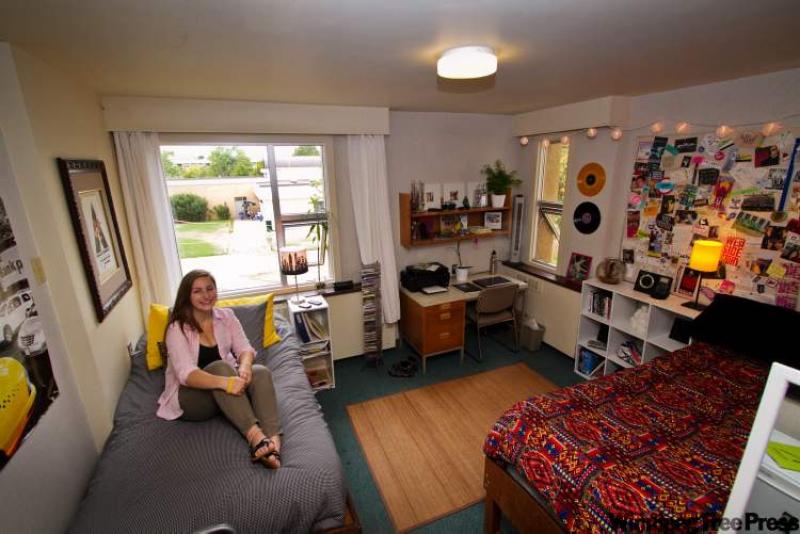Necessity is the mother of creativity for university students trying to brighten their dorm rooms.
Decorating takes on a whole new meaning when you're a student. The rules are strict and straightforward: The walls cannot be repainted. The curtains cannot be altered or removed. No nails on the walls or ceiling. Given that most university students have little money to spend on decorating, it's a wonder what people living in an institutional setting can achieve.
"Anything is possible," says Carly Moffat, an education major living in residence at the University of Victoria.
"It's a mental thing. You are what you make your room. There is a direct correlation: If people like their room, they typically stay longer and have a happier experience."
Dorm rooms become home away from home for many university students. While the residence can be an effective place to study, it should also be a safe place to curl up with a good book.
"Students are the definition of decorating on a budget," says Moffat. "The challenge is to transform concrete walls into a homey and welcoming room. They typically arrive at residence with maybe two suitcases and the clothes on their back."
In her fourth year in residence, Moffat has learned a lot about how to decorate with hardly any money. Here are her tips:
-- Bedspreads: The bed is typically the largest piece of furniture in a dorm room. A colourful bedspread instantly changes the look of a room. It can be a duvet, so it can be practical as well.
-- Photographs: "Photographs are a cheap alternative to paint." Moffat says pictures of friends and loved ones are always popular, although many put up pictures from magazines of various stars. Some fill a cork board with a collage of pictures from various sources.
-- Wall decals: Moffat's walls are covered with stick-on flowers. The backs of the flowers have a non-staining adhesive that allows her to apply and remove the decals many times. There are several designs that reflect the personality of the room's occupant.
-- Christmas and other mood lighting: Inexpensive string lights draw little power but can give off a mellow glow to a dorm room. It is an improvement over stark fluorescent or halogen lights commonly found in the rooms. Moffat prefers the white lights over the coloured lights. Because most residences prohibit open flames -- which include candles and tea lights -- battery-powered tea lights and flameless candles have become popular.
-- Scarves: A common fashion accessory can do double duty in a sterile room. Typically, students drape coloured scarves over lights to give the room a colourful wash of light. Some others will attach scarves to the ceiling. Curtains in the UVic residences are fire retardant and part of the building's fire-safety measures. Residents are not supposed to alter or put materials on them.
-- Floor coverings: After the duvet cover, the floor is the largest visible area in a dorm room. Some lucky residents -- who can get help from a friend with a truck -- turn up at the beginning of the year with a large area rug. Others have to buy rugs after they arrive.
Moffat's advice is to shop for bath mats instead of living room rugs. Small area rugs can easily sell for $25. She has found the same size bath mats for as little as $6.
"They're typically big and cushy -- just the thing to cover the institutional wall-to-wall carpet," she says.
Moffat says the dorm carpet doesn't feel nice and was chosen for its durability and ease of cleaning -- not for tender tootsies.
-- Posters: "I usually splurge when posters go on sale," Moffat says. "Because of their size, they often become the focal point of a room." Modern poster adhesive doesn't leave a mark when removed. The same adhesive is also found on some wall hooks. Most campuses have posters for sale at the bookstore or a stand-alone shop.
-- Postmedia News




